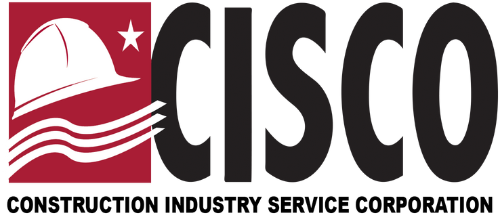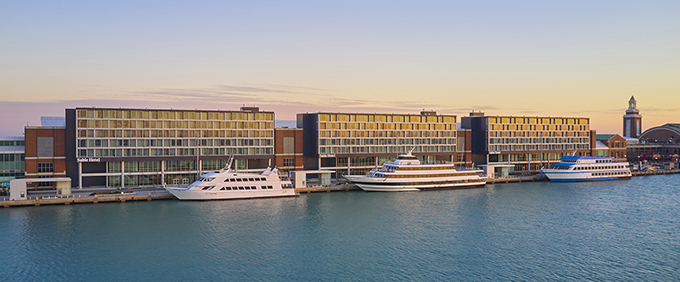Project of the Year Feature – Rehab
January 12, 2024
BURR RIDGE – CISCO’s 5th Project of the Year Feature is the top choice of Rehab, which is Congress Line – Track Improvements – Phase One. General contractor was Kiewit Infrastructure Co.; client was Chicago Transit Authority.
When considering submissions, judging criteria is based on: quality of construction, design, impact on the community and safety record.
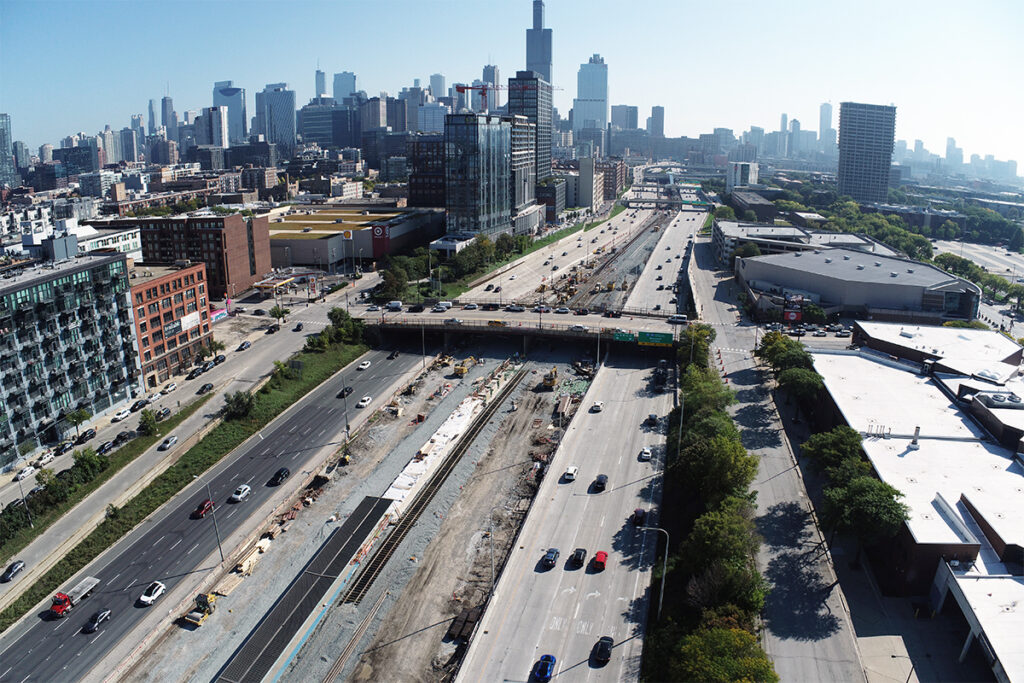
The Forest Park branch of the Chicago Transit Authority (CTA) Blue Line was built in the late 1950s and connects downtown Chicago with the Illinois Medical District (IMD). The line had received routine maintenance since being built, but in 2022 – after more than six decades of heavy use – most of the track components along the branch were still in service beyond their useful life.
Nearly 70 percent of the Congress Branch Blue Line required slow zones to accommodate
deteriorating drainage and subgrade conditions, leading to significant delays and a diminished rider experience. The $105 million Blue Line Congress Trackwork Rehabilitation project was the first phase of the CTA’s Forest Park Branch Rebuild, a multi-year, multi-phased investment to make service faster, safer, more reliable, and more accessible for all Blue Line riders.
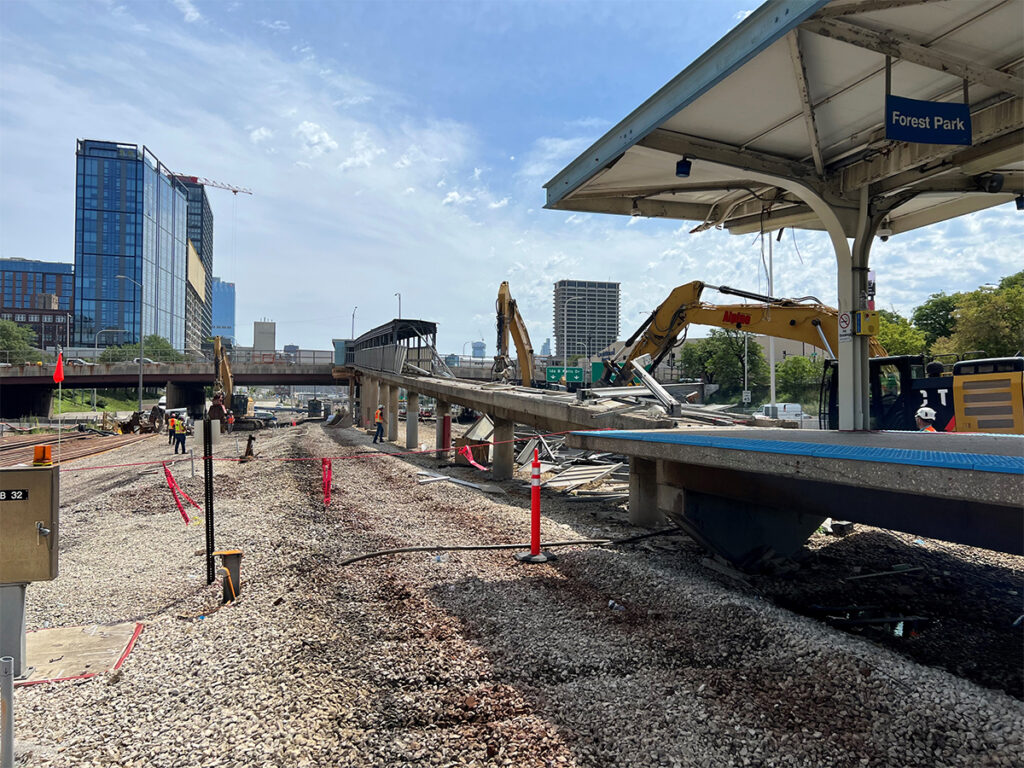
The project area began at the IMD station, included Racine and UIC-Halsted stations, and
terminated in the subway tunnel at LaSalle Station. Major elements of the project included installation of an improved drainage system; new sub-ballast and trackwork; and conduit duct bank and cables for communications and signal systems. Inside the subway tunnel, the scope included complete crack injection, rail and rail plate replacement, drainage improvements, and tunnel cleaning of the subway from LaSalle to the Subway Portal.
Finally, the project also incorporated utility upgrades, shaft foundations, and substructure work to enable future station accessibility improvements and upgrades at the Racine Station (contract to begin in 2024). Completed on time and within budget despite encountering significant geotechnical challenges, Kiewit has been awarded CTA’s “Contractor of the Year” award for the project, and the project has set the bar by which future CTA rapid improvement projects will be measured.
Project work was planned on an aggressive timeline to minimize impacts to CTA ridership. CTA awarded the project to Kiewit Infrastructure Co. March 1, 2023, with conditions that all work be completed within a 61-day complete Blue Line shut down and re-opened to the public prior to the Sunday, Oct. 8 Chicago Marathon. Kiewit prepared a detailed schedule and construction approach to deliver the Project within the timeframe allowed by CTA and worked seven days per week, two shifts per day throughout the line shutdown.
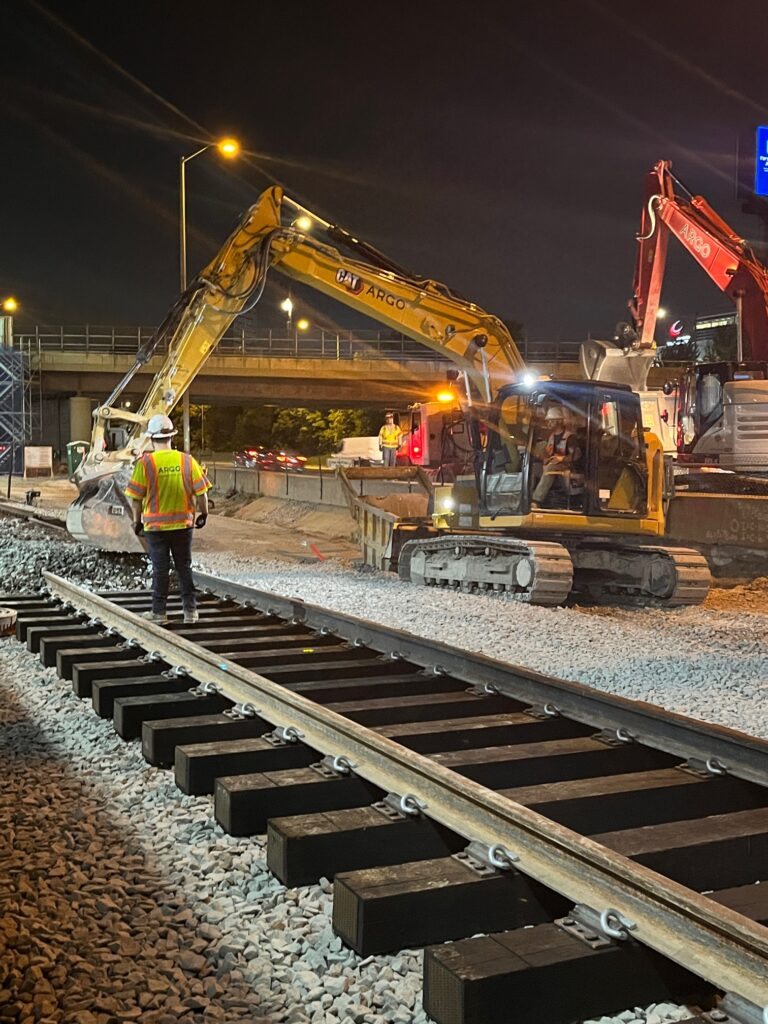
The Project required an expedited startup and close collaboration between the CTA and Kiewit on all project submittals, process plans, and permits. Ultimately, the project team coordinated work with other CTA projects, contractors, and CTA User Departments, as well as the Illinois Department of Transportation (IDOT) and Chicago Department of Transportation (CDOT) for parking and street closures during construction.
Bus bridging service was planned between the five affected stations, however, to minimize staffing needs for this level of bus service and overall impacts to riders, CTA requested an acceleration of work to complete work in the subway and at the Halsted station within 28 days. This would allow half of the line to re-open early and reduce the impacts to CTA customers. Once the CTA shut down the rail line on July 23rd, Kiewit crews immediately began working around the clock to meet the tight schedule.
Kiewit received permits to begin work at the Morgan Street location at the end of July and immediately began preparing to install the drilled shafts, only to discover different site conditions at the Racine Station location shafts. Recognizing this discovery could threaten on-time delivery of not only Phase 1 but the entire program, the Kiewit team worked with CTA and AECOM to analyze the new soil samples and re-design caissons to maintain load bearing capacity.
The team also implemented another process called the Field Change Notice (or FCN), which is an expedited Request for Information (or RFI) process. When problems were encountered in the field, the Kiewit team and CTA’s field inspectors took the information and immediately started working with the designers to get answers, which were then sent out to the team within 24 hours.
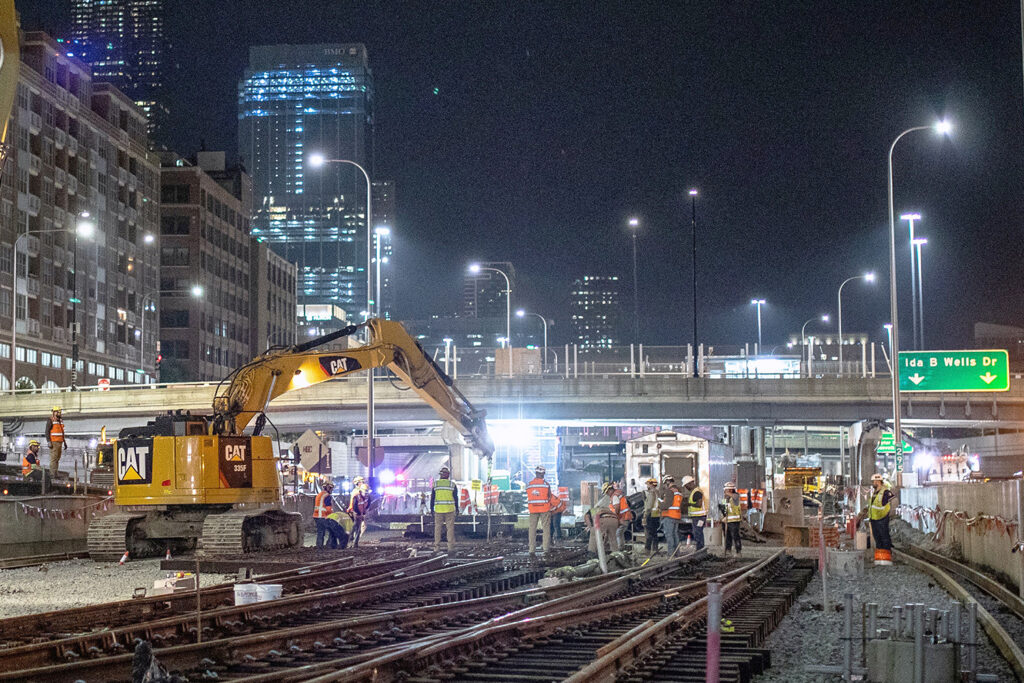
In response to multiple unforeseen conditions encountered and the need for engineering
re-design, CTA added 15 days to the service outage on the line, and the project duration changed from 61 days to 76 days.
As part of CTA’s All Stations Accessibility Program (ASAP), Kiewit completed substructure and foundation improvements at the Racine station entrance to make it fully accessible to passengers who use mobility devices. Currently only four of the 11 stations on the Forest Park Branch of the Blue Line are accessible to people who use wheelchairs or other mobility devices. The Loomis Street auxiliary entrance of the Racine station re-opened following the completion of track work. Additional accessibility work will be completed at the Racine entrance in Phase 2.
During construction, execution of the Construction Quality Program was accomplished through a collaborative system that included CTA every step from planning through completion. The Project team conducted quality-only field walks between the owner and Kiewit, pre-activity meetings, supplier audits, and quality meetings to review metrics and upcoming work.
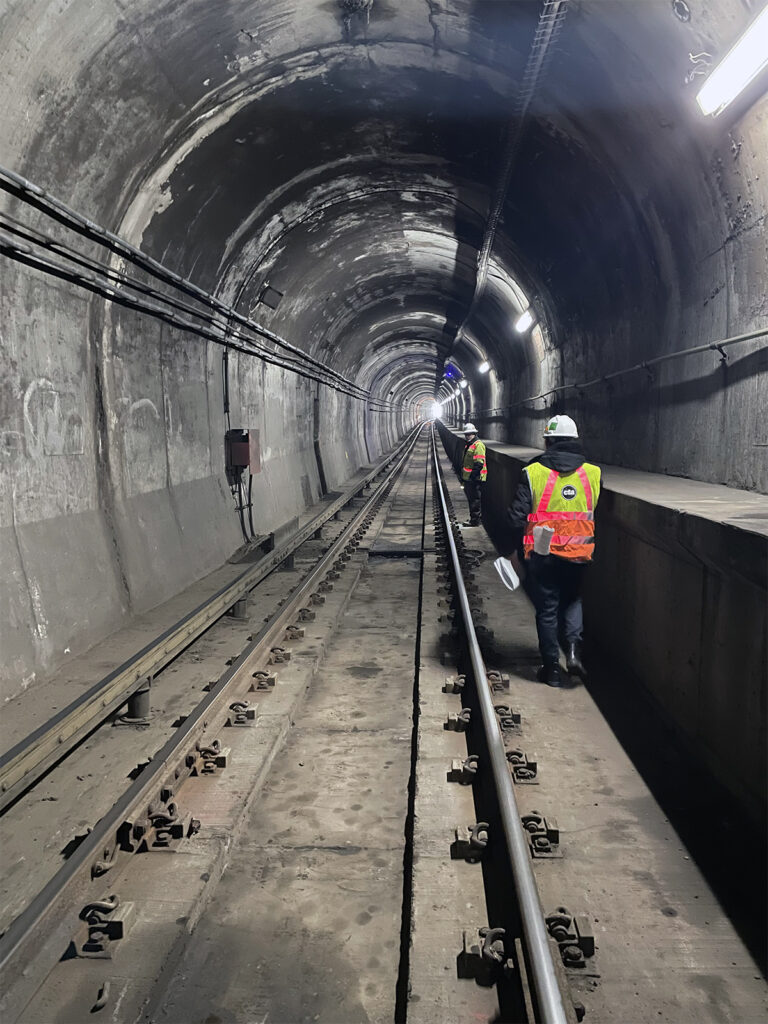
Kiewit and CTA communicated quality trends at partnering meetings using Kiewit’s four-square matrix to track quality performance. The matrix served as a snapshot of quality trends and listed current issues, ongoing issues, good trends, and steady performing areas of the Project. This four-square matrix was updated jointly by the construction team and CTA.
CTA and its designer AECOM completed the project engineering quickly from inception to
procurement and through permitting. However, the discovery of unforeseen site conditions in August necessitated significant re-design efforts for the foundations portion of the work at Racine station. To stay on schedule, CTA and its designer conducted emergency re-design efforts on the drilled shaft or caisson elements, staffed additional engineering personnel through the outage period, and made staff available on an “on-call” basis 24/7 to quickly address engineering questions and verify designs for the site conditions.
Finally, Kiewit’s in-house engineering team at Kiewit Engineering Group, Inc. (KEGI) also contributed to this project. KEGI designed the temporary signals that alerted trains to the change in route caused by the reconstruction project. These signals were vital to keeping crews safe as they work adjacent to active rail lines at both ends of the project.
In addition to reducing delays and improving the rider experience on the Blue Line, the project also achieved considerable impact to the community in the form of local craft hiring and inclusion of diverse subcontractor opportunities.
CTA set a workforce participation goal of 10 percent (Workforce Innovative and Opportunity Act or WIOA), which Kiewit achieved despite the accelerated schedule for mobilization and completion of the work. To meet the goal, Kiewit attended more than ten community outreach events and hosted live training and orientation events for prospective hires. In total, Kiewit employed approximately 100 of our own craft, and the project employed more than 500 including subcontracted craft.
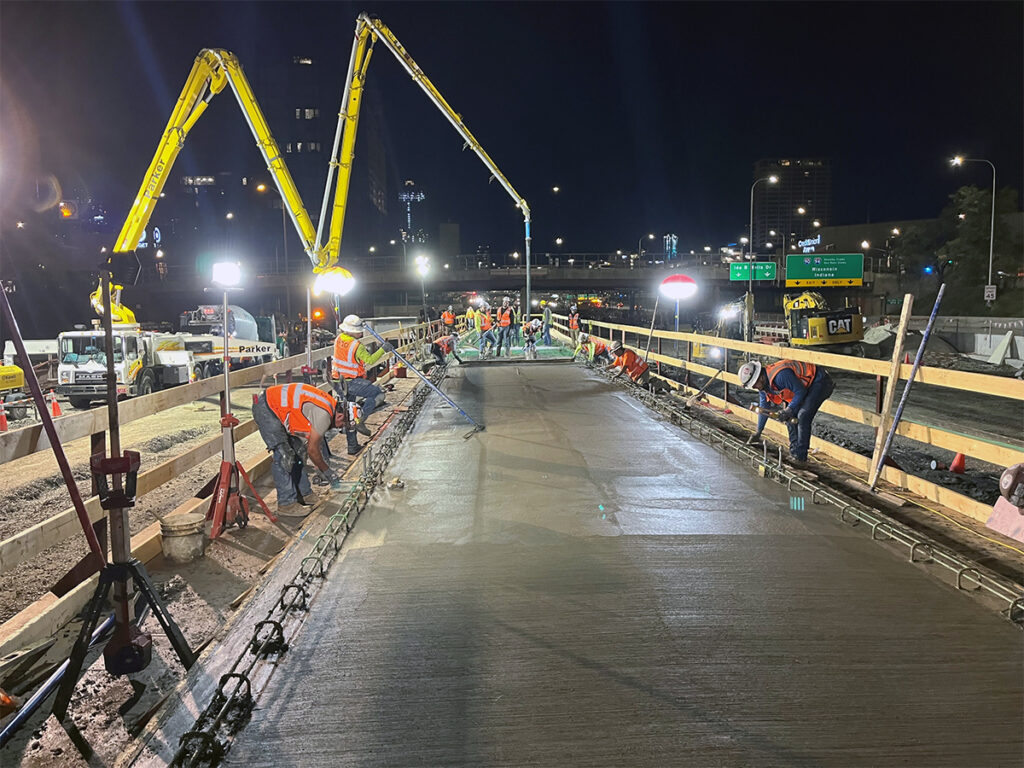
Construction operations within the very confined work site were fundamentally high-risk. The 1.5-mile-long construction site was in the median between the Eastbound and Westbound lanes of the I-290 Congress Expressway, which required considerable planning to ensure safety of construction operations as well as traffic on the highway.
The project necessitated nightly lane closures on both directions of I-290 to allow for delivery of materials to and from the site. Kiewit’s extensive efforts to minimize impacts to traffic included utilizing nightly double lane closures, crash attenuator vehicles, and state police assistance to ensure there were no injuries to the motoring public.
Recognizing there was significant risk of human/equipment interaction on the narrow site, the project team established stringent lanes for truck traffic and equipment operation and implemented clearly delineated safety zones to separate the craft workers from these risks. Crews accessed the work area utilizing temporary barrier wall openings, stair towers from overpasses, the Racine Station, permanent shoulder closures and nightly lane closures on the I-290 EB and WB Expressway to avoid the need to travel the length of the project site and risk interaction with working equipment.
Working more than 150,000 craft hours through the extended line cut, the project maintained a very good safety record with only one subcontractor recordable and one contractor recordable.
